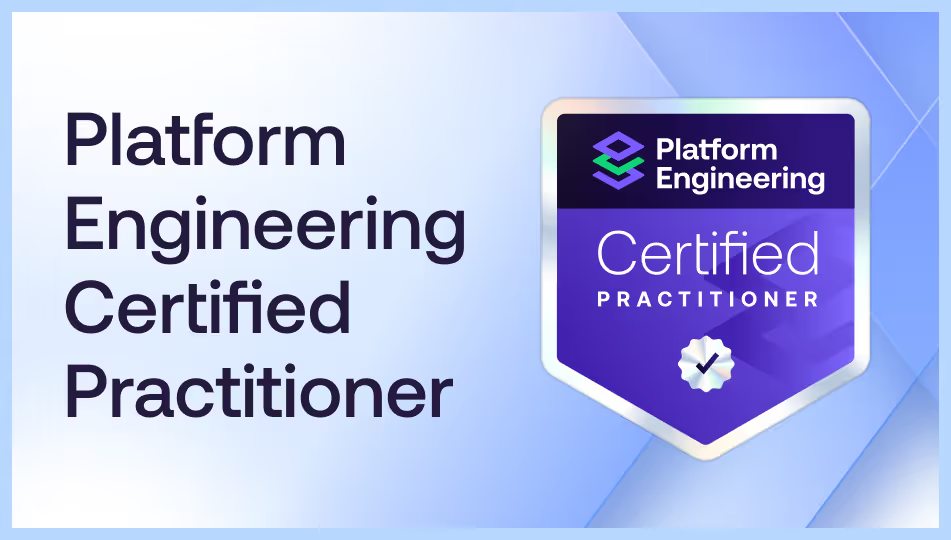For all the potential of platform engineering, the stark reality is that initiatives fail at an alarming rate. This series zooms in exactly why that happens, and what you can do to avoid it. Last week, we covered “adoption”. Now, we’re double clicking on an equally insidious trap, the failure to secure executive buy-in for your platform engineering dreams.
Without strong leadership support, even the most brilliantly architected platform risks becoming an “expensive monument to engineering excellence that delivers zero business value” (Luca Galante, Platform Engineering Community). The absence of top-level endorsement leads to underfunding, resource gaps, and initiatives stuck in endless evaluation cycles where priorities fragment, progress stalls, and teams end up building scattered features with no long term value and inevitably burning out.
Speak executive language, secure executive buy-in
The dynamic between executives and platform teams is often fraught with misunderstanding. Platform engineers often fail to translate the value of their work into the language of business outcomes that resonate with a CTO, CFO, or CISO. Executives are likely primarily concerned with return on investment (ROI), cost savings, competitive advantage, and the retention of top talent. A CFO, for instance, cares little about Kubernetes operators but will be captivated by a 60% reduction in on-call incidents. Similarly, a VP of Engineering is less interested in the specifications of your YAML files and more in a system that allows developers to deploy securely and safely in under five minutes, or one that helps retain top talent by reducing day-to-day slog. It is crucial that you understand how to translate the benefits of your platform initiative into the language that your executives care about.
“Not sure how to figure out the business stuff your executives care about, and don’t have a platform product manager who speaks business jargon? Try putting your company's latest annual report into ChatGPT and telling it you’re trying to figure out what your execs care about for your IDP. You’ll be surprised how well it can pull out core themes like a large focus on cost saving or retention, or how important AI and ESG etc are. ” - Sam’s platform tip of the day
What executive buy-in needs to look like
The obvious deathblow from no executive buy-in is simply a lack of funding. It either never arrives, or gets pulled before you get anywhere. However, this often isn’t the worst thing that can happen to you. Imagine a situation where things are less clear cut. Executives haven’t pulled the plug but aren’t actually excited by the initiative, and thus executive buy-in is minimal. In this common scenario, your “platform team”, perhaps inspired by industry trends, pushes forward but without clear direction, and thus continues to be overwhelmed by "TicketOps," responding to individual requests rather than building scalable solutions for core needs. Millions are spent on new tools and perhaps a developer portal no one asked for, resulting in of course zero adoption.
Without leadership intervention, multiple unaligned platform initiatives might sprout across departments, duplicating effort and burning through budgets without any unified vision. Eventually, the true costs become entrenched and harder to see, good engineers, frustrated by the lack of progress and impact, depart, and the entire initiative crumbles, but not before significantly burning out and demotivating your once excited pioneering platform team.
Contrast this with the journey of a company like SIXT. Facing challenges in 2015 with slow shipping cycles due to a monolithic architecture and organisational silos, they made a foundational decision to adopt a "you build it, you own it" model and invest in an internal developer platform. Their platform engineering team focused on building "amazing experiences" to help product engineering teams solve customer problems and reduce daily friction. This was not a quick fix; it was a journey that required constant focus and buy-in. The results are incredible. From approximately two deployments a month in 2015, SIXT achieved an astounding 112,000 deployments across their environments in 2024, with a 100% adoption rate for their internal developer platforms. This transformation was only possible because their leadership understood (and were convinced of) the long-term value of the platform and consistently supported the initiative.
It’s simple. Give your boss the ammunition to make themselves look good to their boss, and you're on the path to platform success. This means platform teams must frame the platform not as an engineering project, but as a driver of strategic outcomes. And, if needed, they should lean on experts in org change and business storytelling who can help translate technical progress into the right narrative.
Things you can action on:
- Frame the platform as a business enabler: When engaging executives, avoid technical jargon. Instead of “we deployed a Kubernetes operator,” say “we reduced on-call incidents by 60%.” Map platform outcomes directly to business priorities like time-to-market, risk reduction, or developer retention.
- Build the business case with ROI: Executives think in numbers. Prepare a clear, transparent business case that quantifies savings, efficiency gains, and opportunity costs avoided.
- Start with a Minimum Viable Platform (MVP): Don’t ask for a multi-year, multi-million investment upfront. Prove value quickly with a scoped MVP that addresses real developer pain points. Demonstrate measurable improvements and use those results to build confidence and secure further buy-in to then keep scaling up.
- Demo with outcomes, not YAML files: Executives want transformation stories, not code. Never code. Show before-and-after states: onboarding that used to take weeks now takes one day, deployments reduced from 45 minutes to under 10 etc. Use visuals like value stream maps or shiny graphs. Execs love them.
- Engage cross-functional stakeholders early: Executive buy-in is stronger when it’s echoed by peers across the org. Bring security, finance, HR, and procurement into the story as soon as possible. Security will value guardrails, finance will appreciate cost savings, HR will connect improved DevEx to retention.
- Secure long-term sponsorship, not just a launch: Buy-in isn’t a one-off event. Establish regular stakeholder updates, tie platform KPIs to OKRs, and keep wins visible. Executives need to see progress trends and feel ownership of the platform’s journey if they’re going to keep backing it.
Conclusion
The fate of most platform engineering initiatives is sealed not by the quality of the technology, but by the strength of executive commitment behind it. Platforms thrive when leaders see them as enablers of company strategy not just as engineering projects, whether that is accelerating delivery (thus revenue), decreasing risk, driving AI adoption or simply cutting costs. Without that buy-in, even the most elegant IDP risks becoming an unused monument.
These are wide ranging organization and cultural challenges that many engineering orgs aren’t used to navigating. That is why a key aspect of our educational offerings focuses on helping give engineers the skills, and resources they need to speak to executives and secure their buy-in. Or bring us along for the ride, and we’ll help you do it directly.
In the next parts of this series, we’ll dive into other critical pitfalls that undermine platform success, from a lack of shared language to the double edged sword of a “I’ll build it myself” mindset.












